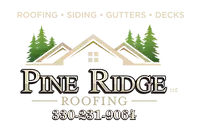Valley Roof Damage by Weather Conditions and Insurance Claims - A Comprehensive Guide
The safety and security of your home, your personal sanctuary, heavily depend on the condition of your roof. But what happens when unforeseen roof damage by weather conditions occurs? Understanding the diverse types of damage caused by natural elements, navigating the intricacies of the insurance claim process, and adopting effective roof maintenance practices are crucial elements in safeguarding your investment.
This comprehensive guide serves as your companion, guiding you through the essentials and empowering you to protect your home confidently in the face of both “roof damage by weather conditions and insurance claims.”
In Valley, roof damage resulting from severe weather conditions such as storms, high winds, tornadoes, and hail is a recurrent challenge, and Pine Ridge Roofing is ready to provide assistance.
Key Takeaways
Table of Contents
Valley Roof Damage - Types of Weather-Related Roof Damage
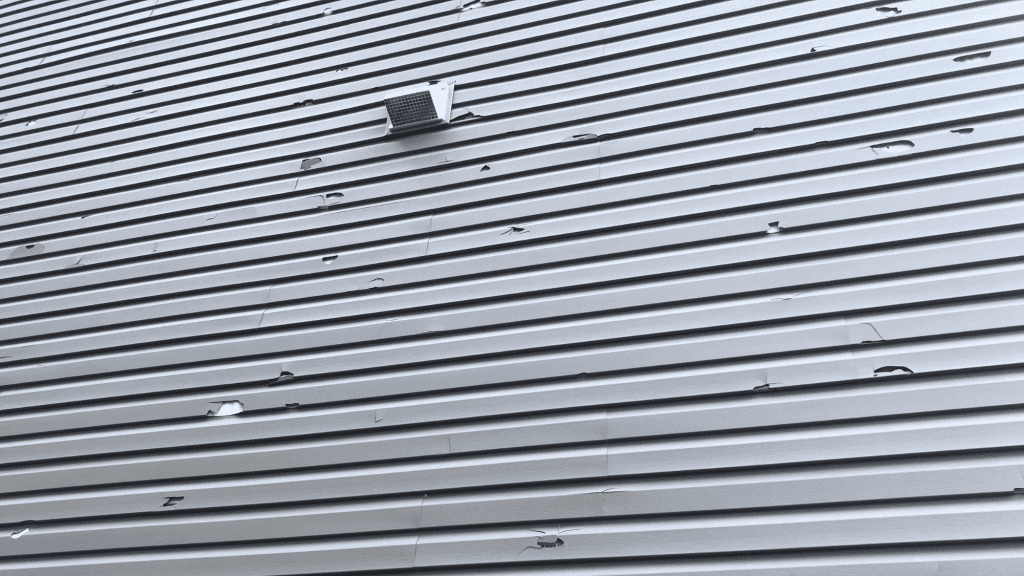
In Valley, roof damage due to inclement weather is a frequent issue. The capricious nature of weather elements such as wind, hail, rain, or snow often results in substantial damage, leading to insurance claims and the necessity for expensive repairs or replacements.
Safeguarding your home entails identifying the signs of storm damage and comprehending how these natural forces affect your roofing materials.
The question of whether roof damage is covered by insurance becomes significant. To secure coverage for your roof damage expenses under home insurance, it’s imperative to prove that the damage directly stems from an extreme weather event.
Wind Damage
In Valley, roof damage caused by high winds poses a potential silent menace to the stability of your roof. This damage may include missing shingles, lifted flashing, or cracked tiles, and in severe instances, the entire roof may be displaced. Despite appearing minor initially, these damages can escalate over time, resulting in leaks and structural issues that necessitate initiating the roof insurance claim process.
Repairing an older roof presents its own challenges, particularly with less flexible and prone-to-cracking shingles. In such cases, involving a qualified roofing specialist for a thorough roof inspection and timely damage resolution becomes crucial.
Gaining insight into the specifics of wind insurance coverage within your homeowner’s insurance policy is fundamental for preparedness, especially during adverse weather conditions like storms.
Wind damage can arise from various weather events, including severe storms or hurricanes. Regularly monitoring your roof after such events is essential, and taking swift action upon observing visible signs of wind damage is critical. If, for instance, a substantial tree branch is discovered on your roof, it is advisable to have it professionally removed to prevent further damage and potential roof damage claims.
Hail Damage
When a hailstorm makes landfall, it can wreak havoc on your roof, causing dents, punctures, and shingle granule loss. Even though this kind of damage may go unnoticed by the untrained eye, its impact on your roof’s lifespan and effectiveness can be substantial. Hail has the ability to bruise or crack the shingle mat, creating vulnerabilities that allow water to gradually infiltrate your home, potentially resulting in the need for a roof claim.
Roof inspection for hail damage can be challenging, especially after a storm. Insurance adjusters and roofing professionals often consider metal components surrounding the roof, such as:
- Roof vents
- Pipe boots
- Gutters
- Roof flashing
It is essential to exercise caution and avoid inspecting the roof immediately after a storm, especially if it has a steep slope. In cases of significant hail damage, swift action, such as securing tarps to the roof, is imperative to prevent further deterioration from rainwater.
Rain and Snow Damage
Rain and snow may seem harmless, but they can wreak havoc on your roof if not properly managed. Here are some potential issues caused by rain and snow:
- Leaks and water damage
- Structural issues
- Roof collapse due to the weight of accumulated snow
- Ice dams, which can damage your roof and gutters
It’s important to take steps to protect your roof from these potential problems.
Undertaking preventive measures such as routine inspections, ensuring sufficient ventilation and waterproofing, and promptly addressing any damage is vital to prevent rain and snow damage. By staying proactive in maintaining your roof and understanding your homeowner’s insurance coverage options, such as Actual Cash Value (ACV) and Replacement Cost Value (RCV) policies, you can minimize the risk of costly repairs or replacements due to weather-related damage.
Valley Roof Damage - Insurance Coverage for Weather-Related Issues
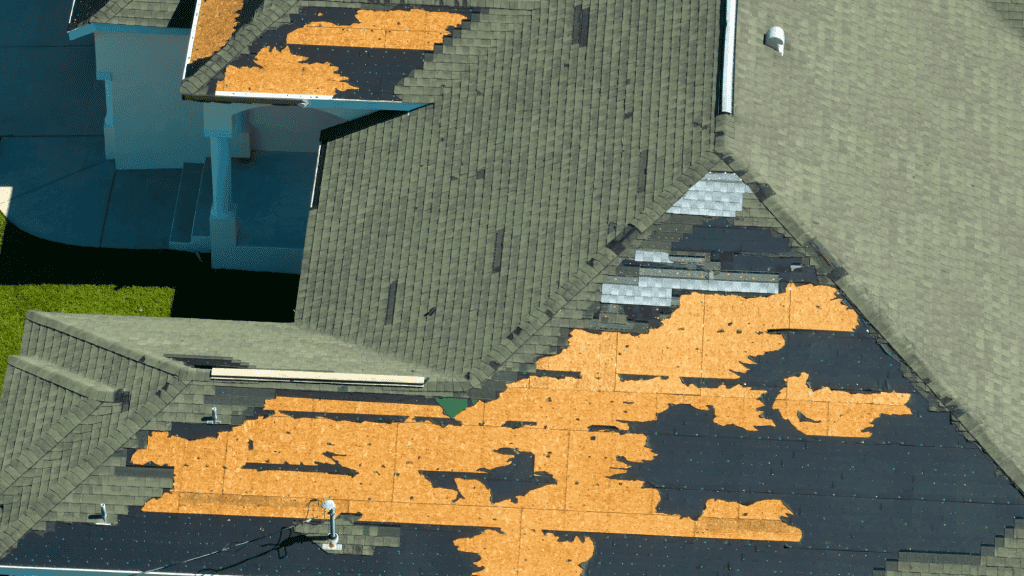
Safeguarding your home from unexpected roof damage in Valley, Ohio, relies heavily on the insurance company’s role in offering crucial financial protection. Navigating the intricacies of insurance coverage, though, can be a challenging task. A profound comprehension of policy distinctions, such as Actual Cash Value (ACV) and Replacement Cost Value (RCV), coupled with an awareness of common exclusions, can substantially impact how your claim is managed and ultimately resolved.
Policy Types: ACV vs RCV
An Actual Cash Value (ACV) policy offers coverage for the replacement of your roof. It reimburses you the depreciated value, deducting the applicable deductible. In other words, you’ll receive compensation for the current value of your roof at the time of the damage, which may not be enough to cover the full cost of repairs or replacement.
On the other hand, a Replacement Cost Value (RCV) policy offers replacement cost coverage, which means that it covers the cost of roof replacement, providing funds for a new roof based on current prices and materials. With an RCV policy, you’ll initially receive a check for the actual cost value of your roof, and upon completion of the roof replacement, a second check for the remaining amount will be issued, provided you have met all requirements.
The choice of a suitable policy for your needs can greatly impact the payout you receive in the event of a roof damage claim, making it an important decision. It is essential to:
- Review your insurance policy
- Understand the differences between ACV and RCV
- Consult with your home insurance company to ensure you have the appropriate coverage for your specific situation.
Common Exclusions
Safeguarding your home from weather-related roof damage in Valley, Ohio, with homeowners insurance is a wise decision, but it’s equally important to be aware of common exclusions that might impact your claim, like:
- improper installation, which refers to deviating from the manufacturer’s instructions or local building codes during roof installation. Such deviations can lead to accelerated wear and tear and potentially invalidate your roof’s warranty.
- Neglecting routine maintenance is another exclusion, involving tasks like cleaning gutters and removing debris. Damages resulting from insufficient maintenance may not be covered by your insurance policy.
- Additionally, some policies may exclude coverage for specific weather events, such as hurricanes or earthquakes.
A thorough review of your insurance policy is essential to understand these exclusions and ensure you have the appropriate coverage for your roof. Inadequate maintenance occurs when a roof is not regularly inspected and maintained according to the manufacturer’s instructions or local building codes, possibly resulting in premature deterioration and warranty invalidation.
Understanding these exclusions and taking steps to ensure proper roof installation, regular maintenance, and protection from excluded weather events can help you avoid potential claim denials and ensure you receive the coverage you deserve.
Valley Roof Damage - Filing an Insurance Claim
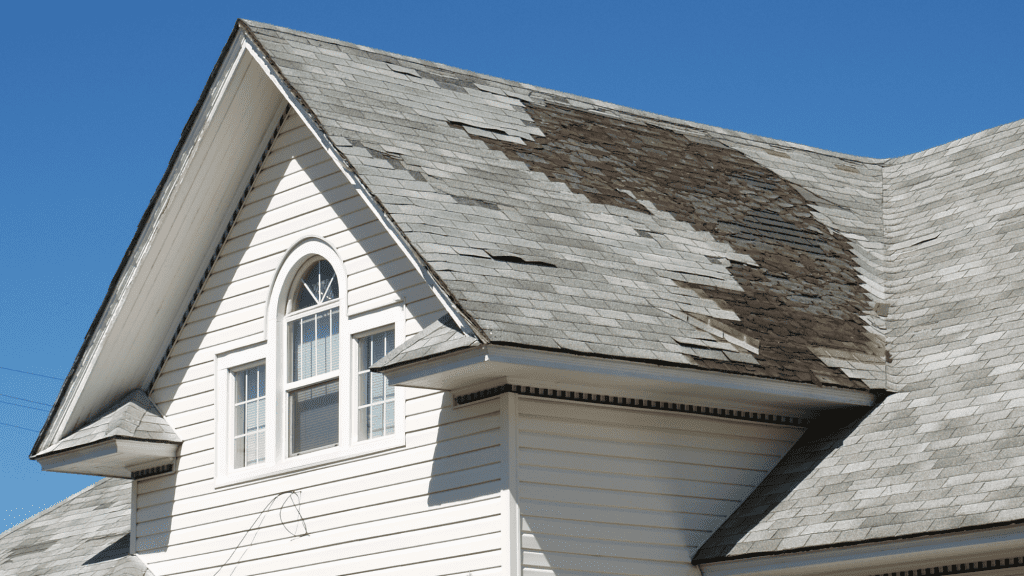
Filing an insurance claim for roof damage in Valley, Ohio demands a strategic and meticulous approach. Knowing how to thoroughly document the damage, establishing effective communication with insurance adjusters, and making informed choices in selecting a roofing contractor are critical components of a successful claims process.
This guide is your companion, offering detailed steps and practical tips to navigate the insurance claim journey for roof damage with ease.
Documenting the Damage
Thorough documentation of the damage is crucial before filing an insurance claim for roof damage. Here are the steps to follow:
- Take photos of the damaged areas, including any missing shingles, lifted flashing, or cracked tiles.
- Create a list of the damage and make detailed notes, including dates, times, and any relevant weather events that may have contributed to the damage.
- If you’ve already taken steps to prevent further damage, such as attaching tarps to your roof, be sure to take photos of these measures as well.
Once you’ve documented the damage, obtain an estimate from a qualified roofing contractor to determine the cost of repairs or replacement. This estimate will not only help you understand the extent of the damage but will also serve as valuable documentation when submitting your claim to your insurance company. Having a thorough and accurate record of the damage will significantly improve your chances of a successful claim.
Working with Adjusters
In Valley, roof damage insurance adjusters are integral to the claims process as they evaluate the damage to your roof and calculate the value of your claim payout. Working effectively with adjusters can be the key to getting the best possible outcome for your claim. It is essential to provide accurate information, maintain records of all interactions and documents related to the claim, and remain truthful throughout the process.
If your claim is denied, you have options to pursue a resolution. You can:
- Ask your insurance company for a different adjuster to get a second opinion
- Consult a structural engineer for an inspection and proof of the damage
- Pursue legal avenues as a last resort
By understanding the role of adjusters and being prepared to work with them, you can increase the likelihood of a successful claim and receive the coverage you need to repair or replace your damaged roof.
Choosing a Reputable Roofing Contractor
The choice of a reputable roofing contractor plays a vital role in ensuring both quality work and a smooth insurance claims process. When investigating roofing contractors for insurance claims, it’s essential to consider factors such as their experience with claims, turnaround times, and their ability to collaborate with adjusters. A qualified roofing contractor excels in accurately documenting damage according to insurance companies specifications and providing expert assessments.
Opting for a local and reliable roofing contractor, such as Pine Ridge Roofing, provides peace of mind regarding the handling of your roof repair or replacement. Their team of certified roofers and insurance specialists is committed to assisting with storm repair, restoration, and insurance claims in Valley, OH, and the neighboring areas. Choosing an experienced roofing contractor is a surefire way to guarantee the safety and integrity of your home.
Valley Roof Damage - Preventative Measures and Maintenance

Shielding against the financial fallout of weather-induced roof damage, insurance serves as a vital resource. However, to steer clear of substantial repair expenses, embracing preventive measures is paramount. Consistent inspections, ensuring adequate ventilation, and investing in waterproofing contribute significantly to upholding your roof’s optimal state. This proactive approach not only minimizes the likelihood of weather-related damage but also extends the lifespan of your roofing system.
Routine Inspections
Regular roof inspections serve as an effective method to spot and tackle potential issues before they escalate into significant problems. Inspections should evaluate the roof for signs of:
- Deterioration
- Missing or damaged shingles
- Debris in the gutters
- Roof ponding
For optimal roof health, it’s crucial to conduct routine inspections, particularly in regions with challenging weather conditions. Aim for inspections at least twice a year to detect and address minor issues early on, preventing them from turning into major concerns.
Pine Ridge Roofing, a reputable contractor, provides free roof inspections to ensure your roof’s integrity. Take a proactive step in preserving your roof—schedule your inspection today by calling us now.
Proper Ventilation and Waterproofing
Proper ventilation and waterproofing are essential elements in safeguarding your roof against moisture buildup, ice dams, and other weather-related damage. This involves:
- Maintaining good indoor air quality
- Implementing effective home ventilation practices
- Utilizing exhaust fans and air purifiers
- Installing a robust ventilation system
- Correctly attaching roof ventilation products.
Inadequate attention to ventilation and waterproofing can lead to issues such as moisture accumulation and ice dams, potentially requiring expensive repairs and replacements. By prioritizing these measures, you can mitigate the risk of damage, ensuring your roof’s longevity and the optimal performance of your roofing materials.
Pine Ridge Roofing: Your Partner in Roof Repair and Insurance Claims
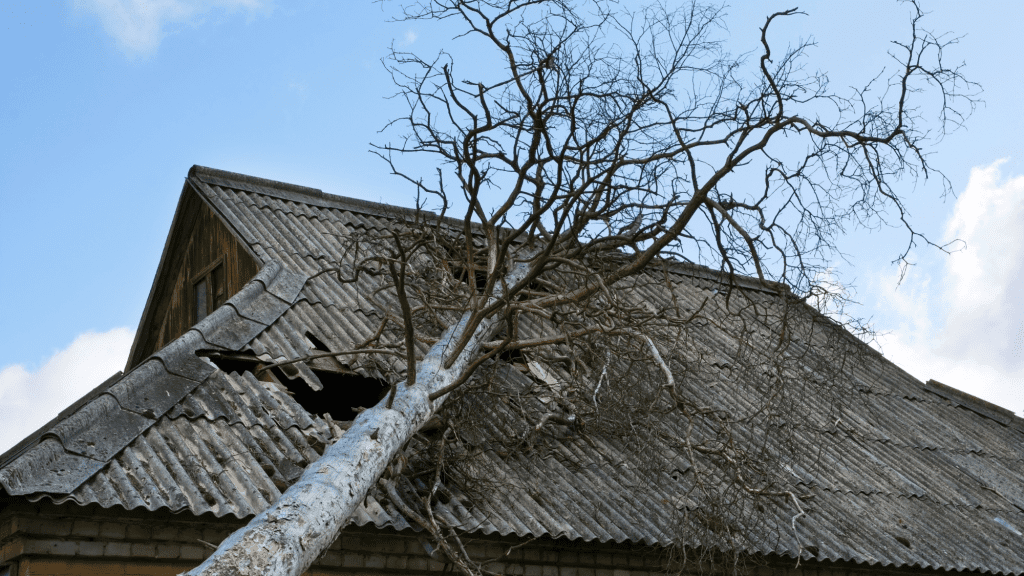
Pine Ridge Roofing, serving Valley, Ohio, and surrounding areas, specializes in:
- Storm damage repairs
- Insurance claims
- Emergency inspection
- Tarping services
- Assistance with insurance claims for weather-related roof damage
- Roof replacements
- Siding repair and replacement
- Gutter repair and replacement
- Leaf Guard Installation
- Deck building
Over the course of 25 years, our team, consisting of certified roofers and insurance specialists, has garnered invaluable experience in delivering unmatched roof repairs. Our primary goal is to protect and restore your home, especially in the aftermath of weather-related damage events.
Emergency Inspection and Tarping Services
If you suspect roof damage, arranging a complimentary emergency inspection with Pine Ridge Roofing is imperative. This inspection helps gauge the extent of the damage, aiding in informed decisions on necessary repairs or replacements. Our skilled professionals conduct a comprehensive evaluation of your roof, identifying issues such as missing shingles, raised flashing, or cracked tiles that may require immediate attention.
In addition to emergency inspections, Pine Ridge Roofing extends the following services:
- Our tarping services offer temporary protection, preventing further damage to your roof.
- Respond promptly by securing your roof with tarps to minimize the risk of additional damage.
- We ensure your home stays safe and secure throughout the insurance claim process.
Insurance Claim Assistance
Navigating the insurance claim process can be overwhelming, but Pine Ridge Roofing is here to help. They offer the following services:
- Assisting with insurance claims
- Representing homeowners
- Negotiating with insurance companies
- Providing quality roof replacement services
Count on Pine Ridge Roofing’s insurance claim expertise to secure the best possible outcome for your claim, allowing you to prioritize the safety and well-being of your family. Their comprehensive insurance claim assistance includes:
- emergency inspections
- tarping damaged areas
- representing homeowners during insurance adjuster meetings
- negotiating with insurance companies, and using top-notch products like Owens Corning shingles and synthetic felt for roof replacements.
Pine Ridge Roofing ensures that your roof repair or replacement is conducted with professionalism and efficiency, giving you peace of mind and the assurance that your home is safeguarded.
Summary
Weather-related roof damage in Valley, OH can be a daunting challenge for any homeowner. Understanding the types of damage, navigating the insurance claim process, and maintaining your roof through preventative measures are all essential steps in protecting your home. Armed with the knowledge provided in this comprehensive guide and the assistance of a reputable roofing contractor like Pine Ridge Roofing, you can confidently face any weather-related roof damage, knowing that your home and family are well-protected.
Frequently Asked Questions
Does Home Insurance Cover Roof Storm Damage?
The coverage of roof storm damage in your home insurance policy hinges on the specific terms included in the plan. Most insurance plans typically cover damages resulting from hail, strong winds, destruction caused by falling objects, and internal damage due to roof storm damage. For instance, if a storm results in the destruction of your roof and subsequent rainwater damage to the ceiling, your insurance policy will generally provide coverage for repairing both the roof and ceiling.
Are blown-off shingles covered by insurance?
Insurance companies typically understand the importance of a roof and will cover the cost of roof replacement when shingles are blown off due to unpreventable circumstances.
What is considered wind damage to shingles?
Shingles, when subjected to strong winds, can exhibit telltale signs of damage such as tearing, creasing, or detachment from the roof structure. This vulnerability is more pronounced in three-tab shingles, attributed to the repetitive lifting or flapping they undergo. It’s important to note that unsealed shingles are generally immune to these issues unless accompanied by visible physical mat damage.
My roof doesn’t leak. Does this mean my roof is okay?
Just because your roof isn’t currently leaking doesn’t mean it’s problem-free. Often, roof damage stays out of sight, and leaks may not emerge until the next rainstorm. Pine Ridge Roofing relies on skilled professionals who utilize advanced tools and techniques to pinpoint moisture beneath roofing materials and uncover concealed damage. Avoid surprises and potential issues by taking advantage of our free inspection offer. Contact us today to schedule your comprehensive roof assessment!
What is the most common roof damage?
Roof damage in Valley, OH frequently manifests as leaks, typically attributed to issues like damaged shingles, improper flashing near chimneys or gutters, and surrounding vents or pipes.
